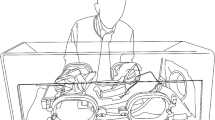Abstract
Background: Viable cancer cells may implant at distant sites and cause tumor recurrence. One possible mechanism is the inadvertent exfoliation of viable tumor cells during dissection. The ultrasonically activated scalpel (UAS) uses ultrasonic energy to disrupt tissues by cavitation and produces a dense cloud of cellular debris that may contain viable cells. This study aimed to investigate the viability of airborne cells released during cancer dissection using the UAS and electrosurgery.
Methods: Flank tumors (n= 8) measuring 1 cm3 were induced in male WAG rats by subcutaneous injection of 2 × 106 CC531s colon cancer cells. Dissection was performed in cutting mode using the maximum power output of the respective devices. Electrosurgery was performed using a standard monopolar electrosurgical unit and a needle probe, and ultrasonic dissection was performed with the Harmonic Scalpel™ utilising the open surgical handset and the hooked spatula tip. The smoke plume was aspirated by a vacuum pump and bubbled under Hank's balanced salt solution to trap particulate matter. The viability of the cellular material was blindly assessed with the trypan blue test and by in vitro culture. The morphology of the cellular debris was studied by examination of cytospin preparations.
Results: Large quantities of cellular debris was trapped in the plume from both devices. However, no viable cells were isolated, nor did in vitro cell growth occur with either device. Examination of the debris from the UAS demonstrated a characteristic mixture of amorphous forms and very few morphologically intact cells. The cauterized tumor produced charred cells and tissue fragments.
Conclusions: In conclusion, this study demonstrates that viable airborne cancer cells are not released after tumor ablation with the UAS or electrosurgery.
Similar content being viewed by others
Author information
Authors and Affiliations
Additional information
Received: 6 June 1997/Accepted: 20 November 1997
Rights and permissions
About this article
Cite this article
Nduka, C., Poland, N., Kennedy, M. et al. Does the ultrasonically activated scalpel release viable airborne cancer cells?. Surg Endosc 12, 1031–1034 (1998). https://doi.org/10.1007/s004649900774
Published:
Issue Date:
DOI: https://doi.org/10.1007/s004649900774




